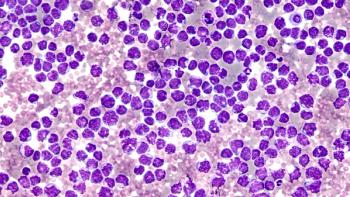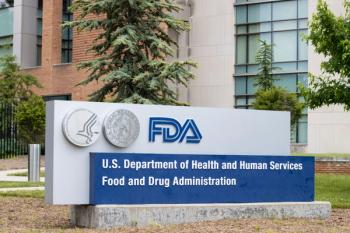Takeaway Points
Payers have struggled with the increasing costs associated with the explosive growth of the 340B Drug Discount Program, which has tripled in size over the last decade with purchases, at list price, reaching $148 billion in 2024. 340B advocates have dismissed criticism of the program’s growth and its attendant costs to payers claiming, without providing data, that the growth is due to pharmaceutical price increases, not 340B provider profit maximization strategies resulting in increased utilization. Taking a data-driven approach, we found that the program’s growth was overwhelmingly the product of increased utilization, not price.
The 340B Drug Discount Program (340B program) obligates drug makers to sell their outpatient drugs to a wide range of providers at heavily discounted prices. The 340B program has tripled in size over the last decade, even as the vulnerable patient population it was ultimately created to serve has halved,1 and in 2024, it reached $148 billion as measured by the list price value of the products sold.2 The Health Resources and Services Administration (HRSA), the agency responsible for the program’s oversight, recently announced that the program grew by 24% over the course of just one year in 2023.3 A number of commercial insurers, managed care plans, and employers have criticized the growth of the program. Prior studies have shown that 340B program growth increases costs to payers, including employers,4 because payers pay undiscounted reimbursements to 340B providers for the sharply discounted drugs that they receive from drug manufacturers. They criticize 340B providers alleging that they drive program growth by engaging in profit maximization strategies that increase utilization (and their profits). Specifically, critics assert that 340B providers target the acquisition of prescribers and patients associated with specialty medications, where 340B profits tend to be particularly substantial.5 340B program advocates reject that criticism, however, arguing, without offering data, that the growth in the 340B program is a function of manufacturer price increases. Based on a recent study published by our group in Health Affairs Scholar,6 program growth from 2018 to 2024 was overwhelmingly due to utilization increases by 340B covered entities, not drug maker price increases.
Program Growth in 2023 and the Response of 340B Advocates
Recently, HRSA reported that 2023 purchases for the 340B program climbed to $66.3 billion,2 even at the heavily discounted prices that apply. Although HRSA did not calculate the percentage increase this represented from the prior year, industry observers quickly noted that the HRSA figures represented a 24% year-over-year increase.7 The value of 340B product at list price, a measure of its reimbursement value, as paid by commercial plans, managed care organizations, employers, and others, climbed to $124 billion in 2023 and to $148 billion in 2024.2
In responding to concerns about the program’s growth from payers and other critics, 340B advocacy groups representing 340B hospitals and clinics have repeatedly asserted that the program's growth is due to drug maker price increases:
- 340B Health, a prominent advocacy group representing 340B hospitals, argued that HRSA’s figures “demonstrate the tremendous financial impact” of drug pricing in the “growth in overall prescription spending.”7
- An American Hospital Association executive presenting to the National Alliance of Health Care Purchasers annual forum asserted that the “340B Program has grown mostly due to drug manufacturer pricing decisions.”8
- A spokesperson for the AIDS Healthcare Foundation stated, in discussing HRSA’s calculation of the program’s size in 2023, charged that the agency’s report showed “exploding drug price increases” by manufacturers and that the “top line” increases were “not driven by an explosion of prescriptions written by 340B providers.”7
- An officer for Ryan White Clinics for 340B Access similarly stated that “exorbitant drug prices are the main drivers” of the program increase.
None of these commentors supplied data to support their assertions.
Data Analysis, Not Slogans
As reflected in our Health Affairs Scholar article, we performed the first comprehensive, data-driven analysis of the relative contributions of price vs utilization to 340B growth to test the competing assertions of 340B advocates and critics. We used a multiyear, national sample of drug sales data for 2018 to 2024 consisting of over 90% of branded and generic pharmaceutical product sales in the US, spanning more than 100,000 individual outlets.
Step 1: 340B Growth Outstrips Other Purchases
We began our analysis by comparing the relative rate of recent growth in the 340B program and in non-340B sales for 2023, the same year reflected in HRSA’s recent publication. In the absence of data showing non-340B purchases at net prices, we compared the rate of growth for 340B and non-340B purchasers at list price during 2023.
The rate of growth for 340B sales was 2.1 times that for non-340B sales. More specifically, 340B sales at list price increased from 2022 to 2023 by 15.4%, vs an increase for non-340B purchasers of 7.2%. The annual average CPI-U growth in 2023 was 4.1%.
As an initial matter, then, this analysis shows a substantial difference in the growth of the 340B program compared with non-340B drug sales—the 340B growth rate was 2.1 times the non-340B growth rate. Where the underlying rate of inflation accounted for 57% of the non-340B growth, it accounted for just 26% of the 340B increase.
Step 2: 340B Growth Predominately Attributable to Utilization, Not Price
Next, we examined the relative contributions of price and utilization to the increase in 340B sales for the full period of our study, from 2018 to 2024, using a decomposition analysis. Specifically, we calculated the contribution of changes in price, holding utilization constant, vs the contribution of changes in utilization, holding price constant. An interaction term captured residual effects, if any. The decomposition analysis was performed for each National Drug Code, and contributions were then aggregated, thereby minimizing the effect of changes in product mix. We performed the analysis using discounted prices and at list price.
As reflected in the Table and the Health Affairs Scholar article, utilization, based on 340B discount prices, accounted for an average of 100.7% of the growth in 340B from 2018 to 2024. The average contribution from price was just 2.5%, and the average interaction (reflecting an effect of both utilization and price) was –3.7%. In a price-volume-mix analysis, a utilization contribution above 100% means that those increases would have led to even higher rates of growth, but those utilization increases were offset by reductions in price or mixture effects.
The results were quite similar when the analysis was performed based on list price, where 79.6% of 340B growth, on average, resulted from utilization, 17.3%, on average, was attributable to price, and the average interaction was 3.1%. Accordingly, the average contribution of utilization, using list price, was 4.6 times greater than that of price.
Table. Contribution of Price and Utilization to 340B Sales Growth
Step 3: A Deeper Dive Into Price—Looking at Subsets of Drug Products
Next, we performed examinations of 2 subsets of drug products that we hypothesized might have had greater contributions from price than our sample as a whole. First, we identified the group of drugs whose list prices increases from 2021 to 2022 and 2022 to 2023 exceeded the rate of inflation (using the CPI-U) in order to determine whether that subset of drug products demonstrated a higher contribution to growth from price than utilization. Second, focusing on 2023, the first year in which HRSA identified the top ten 340B drugs by their discounted purchase prices,1 we determined the contributions of price vs utilization for those drugs, because these products might have had a particularly strong ability to command price.
For the years that we reviewed, only 10.6% of all drug products showed list price increases above the rate of inflation in the first year and just 4.9% in the second. When we examined this small segment, we still found the majority of growth for these products, like our sample as a whole, was attributable to utilization, not price. For these drugs, 81.4% of their growth was due to utilization, based on discount price, and 63.6% was attributable to utilization, based on list price. Additional data and analysis is available in the Health Affairs Scholar article.
The analysis of the top 10 drugs was directionally the same. The utilization contributions to growth for these 10 drugs, expressed in 340B discount and list prices, were 72.0% and 66.2%, respectively. The contribution to growth from list and 340B discount price increases were 24.0% and 30.7%, respectively. Even though the top 10 drugs may have had an outsized ability to command price, relative to other drugs, utilization for even these top 10 drugs contributed 3.0 times the increases in 340B discount price and 2.1 times list price increases.
Conclusions
The explosive growth in the 340B program—and the growth of subsidies derived from the “spread” between lower acquisition prices and reimbursement value—is a source of significant concern to payers, which must pay that spread. As the policy debate about the 340B program rages, 340B advocates have claimed that manufacturer prices increases are to blame for the program’s growth, including its alarming 24% increase in just a single year in 2023. Our analyses do not support that assertion. Whether we examine drugs from 2018 to 2024, the much smaller subset of drugs that had list price increases that exceeded the rate of inflation, or the top 10 drugs identified by HRSA in 2023, the answer was the same—the 340B program’s growth is predominately a function of utilization increases, not price.
References
1. Martin R, Sun C, Zeng S, Illich K. Unintended consequences: how the Affordable Care Act helped grow the 340B Program. IQVIA. August 30, 2024. Accessed June 3, 2025. https://www.iqvia.com/locations/united-states/library/white-papers/unintended-consequences-how-the-affordable-care-act-helped-grow-the-340b-program
2. Martin R, Karne H. The size and growth of the 340B program in 2024. IQVIA. 2025. Accessed June 3, 2025. https://www.iqvia.com/-/media/iqvia/pdfs/us/white-paper/2025/iqvia-update-on-340b-growth-in-2024-white-paper-2025.pdf
3. 2023 340B covered entity purchases. Health Resources & Services Administration. October 2024. Accessed June 3, 2025. https://www.hrsa.gov/opa/updates/2023-340b-covered-entity-purchases
4. Sun C, Zeng S, Martin R. The cost of the 340B program part 1: self-insured employers. IQVIA. March 12, 2024. Accessed June 3, 2025. https://www.iqvia.com/locations/united-states/library/white-papers/the-cost-of-the-340b-program-part-1-self-insured-employers
5. Desai S, McWilliams JM. Consequences of the 340B Drug Pricing Program. N Engl J Med. 2018;378(6):539-548. doi:10.1056/NEJMsa1706475
6. Zeng S, Sarraille W, Martin R. What is driving 340B growth: utilization or price? Health Aff Sch. Published online May 21, 2025. doi:10.1093/haschl/qxaf104
7. Newton W. Growth in 340B purchases driven by pharma price increases, broader healthcare trends, providers say. 340B Report. October 22, 2024. Accessed June 3, 2025. https://340breport.com/growth-in-340b-purchases-driven-by-pharma-price-increases-broader-healthcare-trends-providers-say/
8. Many perspectives, one truth: revealing the layers of healthcare pricing. Presented at: National Alliance of Healthcare Purchaser Coalitions Annual Forum; November 19, 2024; Arlington, VA. https://nationalalliancehealth.swoogo.com/2024AnnualForum/session/2443637/many-perspectives-one-truth-revealing-the-layers-of-healthcare-pricing














































